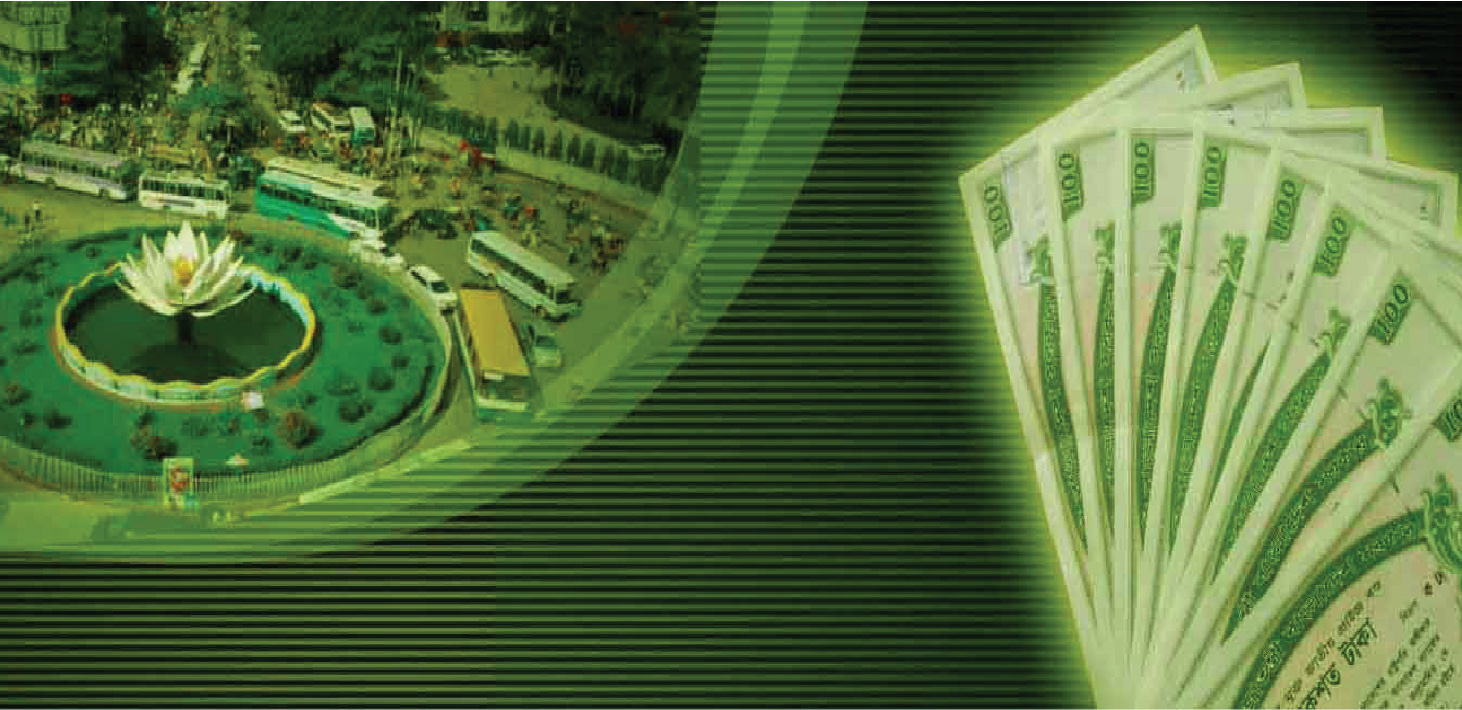Had there been a bond market, the investors would not have lost their entire money
By Ashraful Islam
The government has in recent times taken initiatives to boost bond market and launch a dollar bond to meet the fiscal deficit or fund big infrastructure projects. The central bank, too, has expressed interest in stimulating the secondary bond market by encouraging financial institutions and individual clients to invest in the government securities. However, any such initiative is yet to be translated into reality and a potentially useful bond market is yet to evolve in the country.
An effective bond market plays an important role in economic development, as it provides an alternative method of accumulating capital and distributing among entrepreneurs. It is an instrument for industrial development, but sadly, that is not the case in Bangladesh as yet. There is no corporate bond in the market, due for which the bulk of responsibility of financing is rested upon banks. When banks are giving loans to the government, they are losing capacity to invest in industries.
Indeed, a vibrant domestic bond market can help the corporate sector to raise money for investment as happened in many countries. In our case, it is only the treasury bonds issued by the central bank that are there in the market. The government borrows money through the tools for deficit financing.
This cannot be considered a bond market at par. A bond is defined as a debt instrument issued for raising capital over a period of time and the bond market as a financial market for buying and selling of securities (bonds) by participants. Do, development of a domestic bond market should be a priority task as a proper domestic bond market can speed up financial development.
Only limited among banks
From the amount of deposits that banks usually collect, some 19% has to be deposited with the central bank, out of which, 5% is Cash Reserve Requirement (CRR) and 13% of which is Statutory Liquidity Ratio (SLR.) The banks can always dish out the remaining 81% as loans. Currently the provision of keeping CRR and SLR against deposits is Tk. 1.4 trillion, but they actually have Tk. 2 trillion worth of idle money, in the form of government bonds and bills. According to the central bank, total bonds are accumulated to Tk. 1.45 trillion, which are mostly five to twenty years long. The banks also draw lesser rates of profit from government bonds, as compared to interests charged on their loan recipients.
Share-dependent stock market
Globally, the share market has two basic ingredients, one being shares and the other being treasury bills and bonds. If the share prices go down, then the prices of of bills and bond also go up, and vice versa. As the latter is relied upon for fixed revenues, the fluctuation of share prices is used to extract profits. If the price of shares goes down, investors tend to balance it from bond investments. In Bangladesh, there are shares in the stock market, but no securities. So if the share prices go down, investors do not have anything to make up for the losses. Had there been a bond market, the investors would not have lost their entire money.
Banks’ woes
Chief executives at some of the banks that give loans to the government say that they are currently in a tight spot. They are taking loans which are 5-20 years long, but they are being given bonds as collateral. Their loan money is stuck with the government for a lengthy period of time, the actual figure standing at Tk. 1.45 trillion.
In order to carry out the bond transactions, the government had initiated a secondary bond market. But thanks to its inactivity, that is also stalled as well. In cases, banks are sitting on idle money in absence of mechanism to make transactions with treasury bonds. Banks are saying that they are receiving interest rate of bonds at 9.75%, but actually receiving it at 6-7% (although they pay 12% on bank deposits). If the bond market was active, they could have balance out their expenses through the bond interests.
Initiatives to activate the bond market
The central bank has directed insurance companies to invest 30% from their funds in the bond market. Additionally Bangladesh Bank has asked the financial institutions to invest a portion of their mutual funds in the market, relaxing some of their policies for doing so. Despite the efforts, not more than Tk. 3 billion is being invested on a monthly basis. Sources there say if all the concerned parties invest more than 30% of their mutual funds/other funds, the bond market would be proactive, removing the banks’ instability. Sources at Bangladesh Bank say that they have been trying to keep the secondary bond market active since 2005, but it has yet to establish credibility on its own. The central bank had to revise policies on multiple occasions to make it active.
Bank money becoming stale?
The government is trying to make up for fiscal deficit by taking long-term loans from the banks (80% of what they have taken so far). But low deposit rates, high management expenses and inflation have made a uncomfortable situation for the banks. They risk facing a huge liquidity crisis. This may also lead to anarchy in banks and financial institutions. According to bankers, the current inflation rate stands at 9%, bank management expenses at 1.5% and interest on deposit rates at 7%. So their average income on government loans is Tk. 11 for Tk 100 whereas average expense of banks’ stands at Tk. 18 for Tk. 100. Many governments in the world fix interest on bills and bond taking into account the inflationary situation.
In order to meet budget deficit, the government takes loans in two forms – firstly, the year-long treasury bills, which are based on days – 91, 182 and 364 respectively. And secondly through bonds for a period ranging from 5 to 20 years. The government usually used to take loans with the first method, but after 2009 it switched over to long-term loans, as short-term loans and their subsequent repayments hampered consistent fiscal policies.
As mentioned earlier, the Tk. 1.45 trillion bills and bonds are of no use for banks at the moment. Dr. Salehuddin Ahmed, former central bank governor, said that it is natural that the banks’ efficiency will go down as a result of long-term government loans. ‘Increase in bank expenses and inactive bond markets will deepen the crisis in future,’ he said and cautioned that in order to avoid this, the government must take lesser amounts of loans from banks and invest more on savings certificates.
Multiple solutions if bond market active
Traditionally, during cash crisis, banks draw money from the call-money market, but at high interest rates. If the government can keep the bonds and bills and allow their inter-bank transactions, such crisis could be solved. This was the initial vision in 2003 to open the secondary bond market. But there is no significant progress in the past 11 years.
The lowest amount of investment of treasury bills and bonds is set at Tk. 100,000, which is why general investors cannot invest like other companies, according to sources at Primary Dealer Bangladesh Ltd (PDBL). They opine that involvement of general investors is a requisite for making this bond market active, so the lowest amount for investment should have been Tk. 10,000. Similarly additional branches are being opened for treasury bills/bond transactions only, with determined interest rates. But with the risk of companies going bankrupt, there should be transactional securities from the government as well. This way it would entice investors in the secondary bond market, while keeping it risk-free at the same time.
[Translated and edited by Wafiur Rahman]















